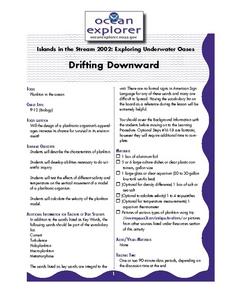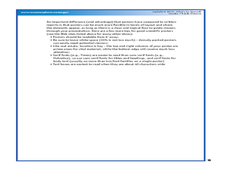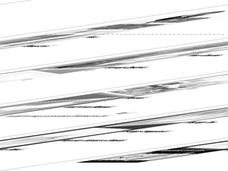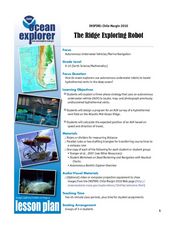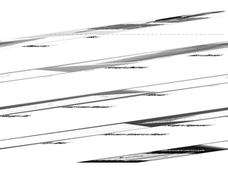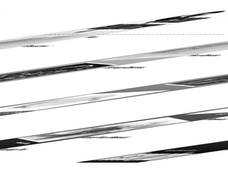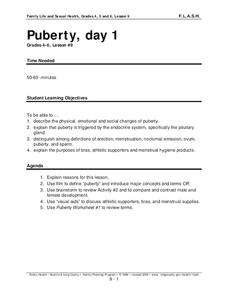Curated OER
Let's Hit the Slopes!
Learners study benthic communities in the Gulf of Mexico and explain their roles. In this investigative lesson plan students participate in a group activity and study how to calculate and index of biological communities.
Curated OER
Shipwreck Mystery
Students study web pages on a shipwreck then locate where this took place on a map. In this marine archaeologist instructional activity students examine what clues archaeologists use to find the location of a shipwreck and ...
Curated OER
Ancient Hunters of the Great Lakes
Students describe theories on how the first humans came to America and show the evidence that supports it. In this investigative lesson students study given material and prepare written or oral reports in their groups.
Curated OER
The Big Blow
Students identify and explain factors that contribute to extreme storms in the Great Lakes. In this investigative activity students study the weather systems in the Great Lakes and compare cyclones to tropical storms.
Curated OER
What's in that Cake?
Learners discover the methods scientists use to investigate Oceanic habitats. For this oceanography lesson, students utilize the Internet to identify deep sea submersibles and how they help scientists study the Charleston Bump....
Curated OER
Drifting Downward
Students study the effects of different salients and temperatures on vertical movement of an organism. In this experimental instructional activity students design different shapes of foil to simulate drifting planktonic organisms.
Curated OER
Animals of the Fire Ice
Young scholars study ice worms and describe how they interact with other species. In this methane hydrate lesson plan students study ice worms and hydrate shrimp to learn their behavior and can participate in an optional...
Curated OER
Where's the Oxygen?
Students study seawater and how temperature and salinity influence it. In this oxygen lesson students complete a lab activity on dissolved oxygen.
Curated OER
What's So Special?
Students study the biology and morphology of Lophelia corals. In this investigative lesson students explain how the coral contributes to communities, and create a poster.
Curated OER
Whole Lotta Shakin Going On
Young scholars study how tectonic plates can produce earthquakes. In this earthquake lesson students use a model earthquake machine to explore hypotheses about earthquakes.
Curated OER
Quake Clues
Students study earthquakes and how sediment accumulations are used for past information on earthquakes. In this earthquake lesson students interpret sediment cores and describe turbidites.
Curated OER
The Chemosynthetic Cafe
Learners study photosynthesis and chemosynthesis. In this chemosynthetic instructional activity students explain the processes of these and define terms.
Curated OER
The Ridge Exploring Robot
Students study about an autonomous underwater vehicle and explain the strategies that it uses to locate and map hydrothermal vents. In this marine navigation lesson students design a program for an AUV survey.
Curated OER
By Land or by Sea...or Both?
Students research a video and participate in a discussion. In this watercraft lesson plan students review material and answer questions about what they learned.
Curated OER
The Puzzle of the Ice Age Americans
High schoolers describe alternative theories for how the first humans cane to America. In this human origin instructional activity students study the origins of the first Americans.
Curated OER
Paleo-Diving
Students study sinkholes and how they are associated with paleoamerican settlements. In this underwater exploration lesson plan students explain how sinkholes are formed.
Curated OER
To See or Not to See
Young scholars identify and discuss key factors that determine how effective color camouflage is in certain habitats. In this investigative lesson students divide into groups and study light.
Curated OER
Puberty
Learners investigate life science by answering maturity questions. In this human health lesson, students identify the changes which occur during puberty and answer study questions based on sexual awareness. Learners define scientific...
Curated OER
Big Fleas Have Little Fleas!
Students study seamounts and learn the importance of structures to species. For this ocean explorer lesson, students participate in an activity that teaches them how to modify a seamount so that they are more suitable for...
Curated OER
How Diverse is That?
Students study the concepts of "variety" and "relative abundance" as they relate to biological diversity. In this life science lesson students calculate numbers that describe the biological diversity in certain communities.
Curated OER
Mystery of the Alaskan Seamounts
High schoolers study seamounts and the processes that form them. In this Gulf of Alaska lesson students interpret data and investigate a hypothesis.
Curated OER
The Giant Barrel Sponge
Students study barrel sponges. In this science and art lesson, students discuss what sponges are, create their own sponge, and share what they created with the rest of the class.
Curated OER
The Cleaning Station
Students study cleaning stations. In this science lesson, students make a painting of a fish known as cleaners which take dead skin off of other fish.
Curated OER
Climate
Learners study zoanthids. In this science and art lesson, students use line to create texture and how to use colors to create value. Learners share their beautiful mat zoanthids with the rest of the class.





